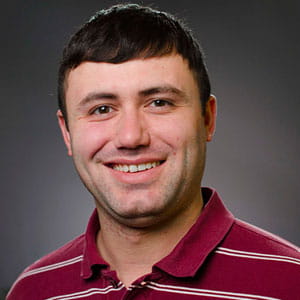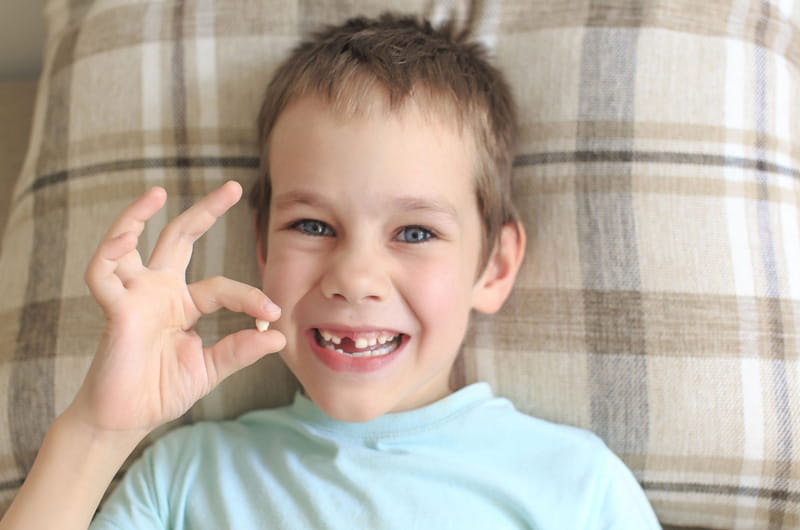Autism Researchers Looking at Baby Teeth to Identify Risk Factors
 By Frank Otto
By Frank Otto

- Bolstered by Research Consortium with Drexel, Jefferson’s Sidney Kimmel Cancer Center Earns NCI Comprehensive Cancer Center Designation
- No link between acetaminophen use during pregnancy and children's autism risk
- Faculty Highlights: Recent Awards and Grants
- Drexel Recognizes Gregory E. Deavens, CPA, CGMA as Business Leader of the Year

A research team led by Drexel University’s Craig Newschaffer, PhD, will use new technology to explore what baby teeth can tell us about children’s risk of developing autism when it comes to chemical exposure in the womb.
The study will focus on children with older siblings who were diagnosed with autism, since they already present a much higher rate of developing autism (roughly one in five are diagnosed, compared to the national average of one in 68). Newschaffer, founding director of the A.J. Drexel Autism Institute, hopes to use the shed baby teeth to examine whether environmental factors play a role in further increasing that risk.
“We will have the unique opportunity to use novel technology to examine the influence of prenatal environmental chemical exposure on autism spectrum disorder risk by measuring trace amounts of chemicals in baby teeth these children have lost,” Newschaffer explained.
The study will be possible thanks to a cooperative agreement with the National Institutes of Health (NIH). For at least the next two years, the work of Newschaffer, the founding director of the A.J. Drexel Autism Institute, and his co-investigators at nine different institutions, will be funded as a part of the Environmental Influences on Child Health Outcomes (ECHO) Initiative.
The NIH awarded $157 million for a multitude of projects under ECHO, which will investigate how exposure to a range of environmental factors in early development — from conception through early childhood — influences the health of children and adolescents.
“Every baby should have the best opportunity to remain healthy and thrive throughout childhood,” said Francis S. Collins, MD, PhD, NIH director. “ECHO will help us better understand the factors that contribute to optimal health in children.”
For his project focusing on the siblings of autistic children, Newschaffer’s co-investigators at Drexel include Kristen Lyall, PhD, Ghassan Hamra, PhD, Leslie McClure, PhD, and Gabriela Marcu, PhD. Lead investigators at collaborating institutions include:
- Manish Arora, PhD, of Icahn School of Medicine at Mount Sinai
- Kelly Botterton, MD, of Washington University in St. Louis
- Lisa Croen, PhD, of Kaiser Permanente Division of Research
- Stephen Dager, MD, and Wendy Stone, PhD, of the University of Washington
- M. Danielle Fallin, Ph.D. and Heather Volk, PhD, of John Hopkins University
- Rebecca Landa, PhD, of the Kennedy Krieger Institute.
- Daniel Messinger, PhD, of the University of Miami
- Joseph Piven, MD, and Heather Cody Hazlett, PhD, of the University of North Carolina at Chapel Hill
- Rebecca Schmidt, PhD, and Sally Ozonoff, PhD, of the University of California, Davis
- Robert Shultz, PhD, of the Children’s Hospital of Philadelphia
This team will study a group of 1,713 subjects called the Autism Spectrum Disorder Enriched Risk (ASD-ER) cohort. In this cohort, there are 1,281 children who are considered “high risk” because of their older sibling’s autism diagnosis, and 432 children called “low risk” because they lack a sibling with autism.
Newschaffer and his co-investigators will test lost baby teeth using technology developed at the Icahn School of Medicine at Mount Sinai for levels of environmental chemicals that the children would have been exposed to while in their mother’s womb. That time is particularly important for neurodevelopment and, thus, particularly vulnerable.
Chemicals being examined in the study include organochlorine pesticides — like DDT — and polychlorinated biphenyls — formerly used for things like insulating electrical transformers. Although banned in the 1970s, the chemicals, true to their “persistent” moniker, remain in the environment and human exposure continues. The study will also consider phthalates, which were used to make plastics more flexible.
Newschaffer and his team hope to determine whether prenatal exposure to these chemicals increase the risk of autism. Additionally, for a smaller group of participants where genetic data are already available, the researchers will also explore whether the genetic susceptibility of a child plays any role on the effect chemical exposures have on autism risk.
Findings will be useful in determining the mechanisms underlying autism, which continues to prove its complexity. Once mechanisms are better understood, more effective prevention and treatment strategies can be developed
And although Newschaffer’s project focuses on the high risk siblings, ECHO could also provide a wider range of individuals in which to apply the baby teeth technology — even for issues beyond autism.
“We’re very excited about the prospect of applying this novel approach to measuring prenatal environmental exposure in larger groups of children in ECHO,” Newschaffer said. “We’d love to integrate this with available genomics measures to, at a scale that has yet to be approached, study the interaction between genetics and environment.”
Drexel News is produced by
University Marketing and Communications.